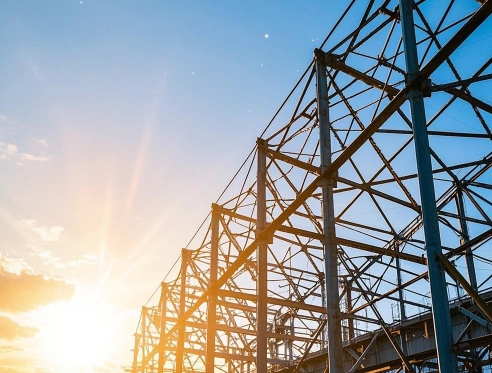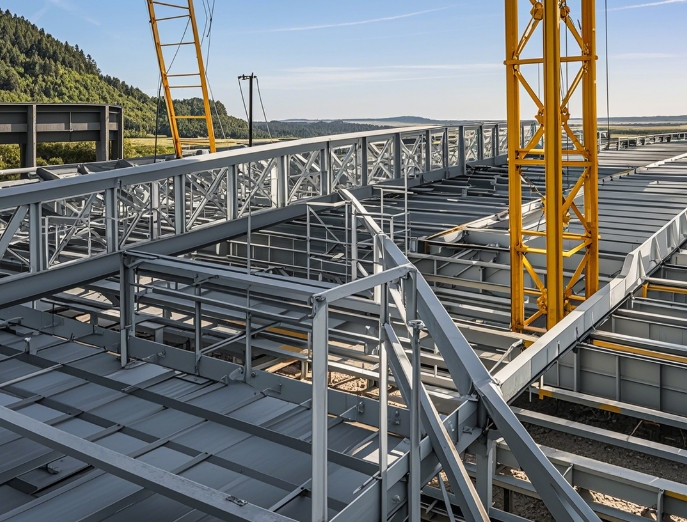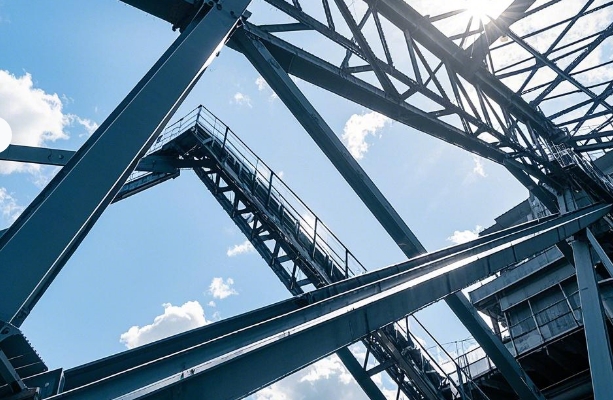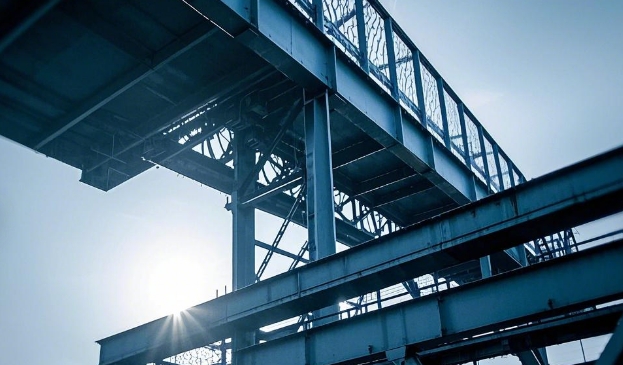Introduction to the Performance of Anti Corrosion Coatings for Grid Steel Structures
更新时间:2025-02-24 14:23:51•点击:3236033 • Industry Views
 Introduction to the Performance of Anti Corrosion Coatings for Grid Steel Structures
Introduction to the Performance of Anti Corrosion Coatings for Grid Steel Structures
In the field of architecture, grid steel structures are widely used in various large-scale construction projects due to their excellent mechanical properties and spatial advantages. However, long-term exposure to natural environments and complex working conditions makes grid steel structures highly susceptible to corrosion threats, which not only weaken structural strength but may also endanger building safety. As the first line of defense against corrosion, the performance of anti-corrosion coatings directly determines the service life and maintenance cost of grid steel structures. Next, let's delve into the key properties of this type of coating.
Excellent corrosion resistance: core protection
Corrosion resistance is undoubtedly the most critical performance of anti-corrosion coatings. In complex corrosive environments, it can construct an indestructible protective barrier on the surface of the grid steel structure, tightly isolating corrosive media such as oxygen, moisture, acid and alkali salts from direct contact with the steel, thereby effectively suppressing the occurrence of corrosion reactions.
Taking zinc rich primer as an example, it utilizes the electrochemical activity of zinc to preferentially undergo oxidation reactions over steel. Even if the coating is locally damaged, zinc can continue to provide cathodic protection for the steel, ensuring the integrity of the steel substrate. High performance organic coatings, with their low permeability and chemical stability, greatly slow down the penetration rate of corrosive media and significantly prolong the corrosion cycle of steel structures.
Excellent adhesion: firm foundation
Strong adhesion is the foundation for anti-corrosion coatings to provide long-lasting protection. Only by tightly adhering to the surface of the steel structure can the coating remain stable under various harsh conditions, without peeling or flaking. Epoxy coatings, with their unique chemical structure and intermolecular forces, can form strong chemical bonds with steel surfaces. Whether it is smooth new steel or rough surfaces treated with sandblasting, they can achieve good adhesion. Therefore, they are often used as primers or intermediate paints, laying a solid foundation for the entire protective system.
Excellent weather resistance: responding to natural challenges
The steel structure of the grid is exposed to natural factors such as ultraviolet radiation, drastic temperature changes, humidity fluctuations, and wind and rain erosion for a long time outdoors. Anti corrosion coatings with excellent weather resistance can effectively resist the photodegradation of ultraviolet rays, prevent coating fading and powdering; At the same time, stable physical and chemical properties can still be maintained under repeated cycles of temperature and humidity, ensuring the long-term effectiveness of protective functions. Acrylic coatings stand out for their excellent weather resistance and are often used as topcoats for outdoor truss steel structures. They can protect the structure from natural erosion while maintaining the aesthetic appearance of the building.
Good flexibility: adaptable to structural deformation
In practical use, the steel structure of the grid will undergo a certain degree of deformation due to factors such as load bearing, temperature changes, and wind force. In order to ensure that the protective coating does not crack or peel off during structural deformation, anti-corrosion coatings need to have good flexibility. Coatings with good flexibility can extend with the deformation of steel structures, maintaining the integrity of the coating and continuously exerting their anti-corrosion effect. Polyurethane coatings not only excel in corrosion resistance, but also have excellent flexibility to adapt to various complex structural deformations, providing reliable protection for grid steel structures.
Excellent construction performance: ensuring construction quality and efficiency
The construction performance of coatings is directly related to the quality and progress of painting projects. Anti corrosion coatings with excellent construction properties should be easy to use common construction methods such as brushing, spraying, and rolling, and have a moderate drying speed, which can meet the construction schedule requirements while ensuring the uniformity and integrity of the coating. In addition, the coating should have good stability during storage, without problems such as delamination, precipitation, and agglomeration, ensuring stable performance during construction, providing convenience for the construction process, and ensuring coating quality.
Certain wear resistance: special working condition requirements
In some special application scenarios, such as industrial plants, transportation hubs, etc., grid steel structures may be subjected to external forces such as mechanical collisions and friction. At this point, anti-corrosion coatings with certain wear resistance become particularly important. This type of coating can withstand daily wear and tear, maintain the integrity of the coating, and continuously perform anti-corrosion functions. Some coatings with added wear-resistant fillers effectively meet the protection needs of grid steel structures under such special working conditions by enhancing the hardness and wear resistance of the coatings.
In summary, the performance of anti-corrosion coatings for grid steel structures is a comprehensive indicator system, covering multiple key aspects such as corrosion resistance, adhesion, weather resistance, flexibility, workability, and wear resistance. In practical engineering applications, it is necessary to comprehensively evaluate and select anti-corrosion coatings with matching performance based on the specific usage environment, working conditions, and design requirements of the grid steel structure, in order to provide comprehensive and reliable protection for the grid steel structure and ensure its safe and stable operation within the design service life.
Introduction to the Performance of Anti Corrosion Coatings for Grid Steel Structures
In the field of architecture, grid steel structures are widely used in various large-scale construction projects due to their excellent mechanical properties and spatial advantages. However, long-term exposure to natural environments and complex working conditions makes grid steel structures highly susceptible to corrosion threats, which not only weaken structural strength but may also endanger building safety. As the first line of defense against corrosion, the performance of anti-corrosion coatings directly determines the service life and maintenance cost of grid steel structures. Next, let's delve into the key properties of this type of coating.
Excellent corrosion resistance: core protection
Corrosion resistance is undoubtedly the most critical performance of anti-corrosion coatings. In complex corrosive environments, it can construct an indestructible protective barrier on the surface of the grid steel structure, tightly isolating corrosive media such as oxygen, moisture, acid and alkali salts from direct contact with the steel, thereby effectively suppressing the occurrence of corrosion reactions.
Taking zinc rich primer as an example, it utilizes the electrochemical activity of zinc to preferentially undergo oxidation reactions over steel. Even if the coating is locally damaged, zinc can continue to provide cathodic protection for the steel, ensuring the integrity of the steel substrate. High performance organic coatings, with their low permeability and chemical stability, greatly slow down the penetration rate of corrosive media and significantly prolong the corrosion cycle of steel structures.
Excellent adhesion: firm foundation
Strong adhesion is the foundation for anti-corrosion coatings to provide long-lasting protection. Only by tightly adhering to the surface of the steel structure can the coating remain stable under various harsh conditions, without peeling or flaking. Epoxy coatings, with their unique chemical structure and intermolecular forces, can form strong chemical bonds with steel surfaces. Whether it is smooth new steel or rough surfaces treated with sandblasting, they can achieve good adhesion. Therefore, they are often used as primers or intermediate paints, laying a solid foundation for the entire protective system.
Excellent weather resistance: responding to natural challenges
The steel structure of the grid is exposed to natural factors such as ultraviolet radiation, drastic temperature changes, humidity fluctuations, and wind and rain erosion for a long time outdoors. Anti corrosion coatings with excellent weather resistance can effectively resist the photodegradation of ultraviolet rays, prevent coating fading and powdering; At the same time, stable physical and chemical properties can still be maintained under repeated cycles of temperature and humidity, ensuring the long-term effectiveness of protective functions. Acrylic coatings stand out for their excellent weather resistance and are often used as topcoats for outdoor truss steel structures. They can protect the structure from natural erosion while maintaining the aesthetic appearance of the building.
Good flexibility: adaptable to structural deformation
In practical use, the steel structure of the grid will undergo a certain degree of deformation due to factors such as load bearing, temperature changes, and wind force. In order to ensure that the protective coating does not crack or peel off during structural deformation, anti-corrosion coatings need to have good flexibility. Coatings with good flexibility can extend with the deformation of steel structures, maintaining the integrity of the coating and continuously exerting their anti-corrosion effect. Polyurethane coatings not only excel in corrosion resistance, but also have excellent flexibility to adapt to various complex structural deformations, providing reliable protection for grid steel structures.
Excellent construction performance: ensuring construction quality and efficiency
The construction performance of coatings is directly related to the quality and progress of painting projects. Anti corrosion coatings with excellent construction properties should be easy to use common construction methods such as brushing, spraying, and rolling, and have a moderate drying speed, which can meet the construction schedule requirements while ensuring the uniformity and integrity of the coating. In addition, the coating should have good stability during storage, without problems such as delamination, precipitation, and agglomeration, ensuring stable performance during construction, providing convenience for the construction process, and ensuring coating quality.
Certain wear resistance: special working condition requirements
In some special application scenarios, such as industrial plants, transportation hubs, etc., grid steel structures may be subjected to external forces such as mechanical collisions and friction. At this point, anti-corrosion coatings with certain wear resistance become particularly important. This type of coating can withstand daily wear and tear, maintain the integrity of the coating, and continuously perform anti-corrosion functions. Some coatings with added wear-resistant fillers effectively meet the protection needs of grid steel structures under such special working conditions by enhancing the hardness and wear resistance of the coatings.
In summary, the performance of anti-corrosion coatings for grid steel structures is a comprehensive indicator system, covering multiple key aspects such as corrosion resistance, adhesion, weather resistance, flexibility, workability, and wear resistance. In practical engineering applications, it is necessary to comprehensively evaluate and select anti-corrosion coatings with matching performance based on the specific usage environment, working conditions, and design requirements of the grid steel structure, in order to provide comprehensive and reliable protection for the grid steel structure and ensure its safe and stable operation within the design service life.
笔记
Recommended Reading
-
Full analysis of seismic design and maintenance of grid structure
2025-02-27 16:16:52•1194602 次
-
What are the key process points to follow in order to ensure the quality of grid processing?
2025-02-27 11:21:00•115612 次
-
What type of construction is the grid mainly suitable for?
2025-02-25 16:42:00•111883 次
-
Quality control requirements of grid manufacturers!
2025-02-25 16:02:44•208055 次






